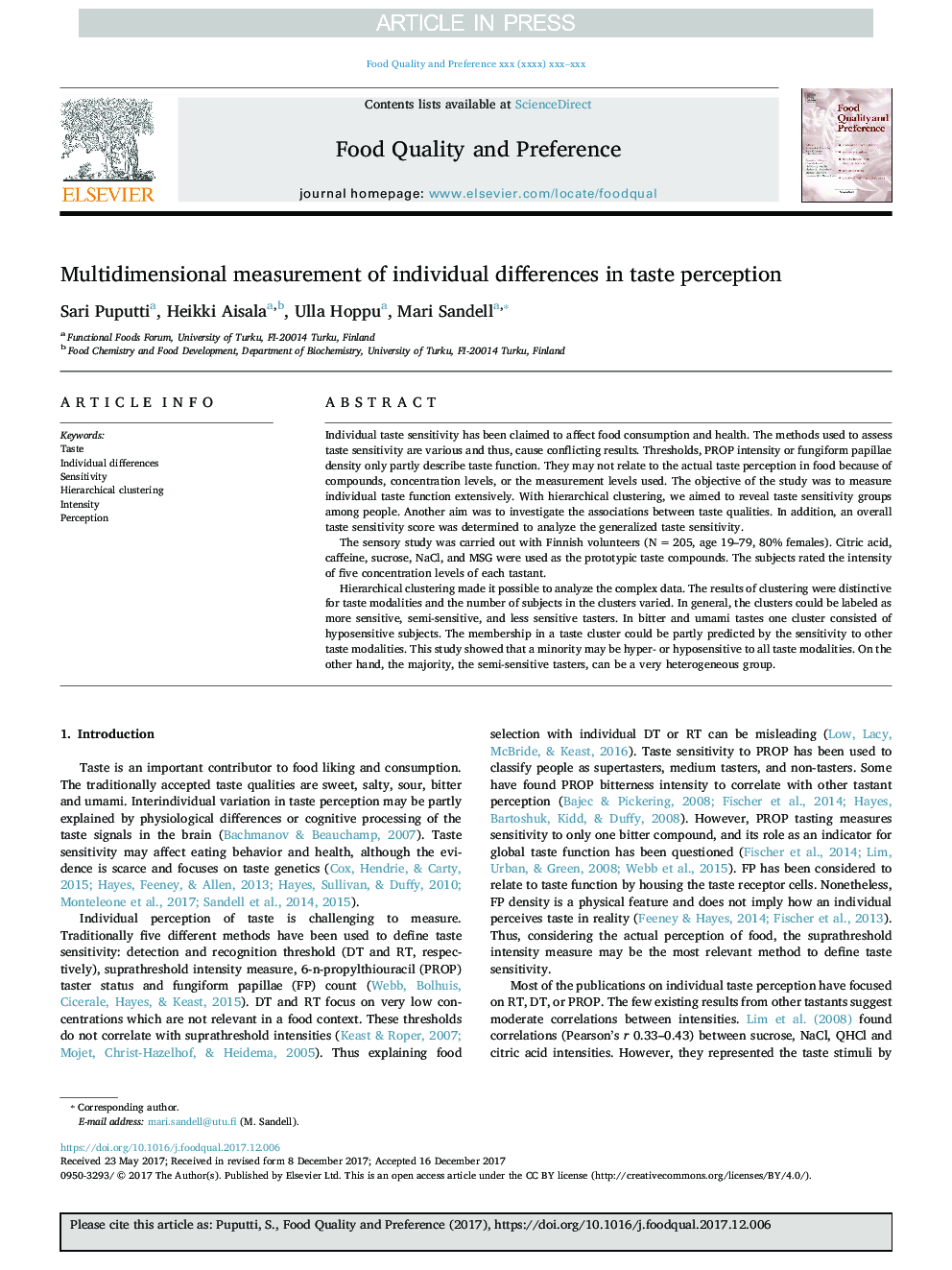| Article ID | Journal | Published Year | Pages | File Type |
|---|---|---|---|---|
| 8838534 | Food Quality and Preference | 2018 | 8 Pages |
Abstract
Hierarchical clustering made it possible to analyze the complex data. The results of clustering were distinctive for taste modalities and the number of subjects in the clusters varied. In general, the clusters could be labeled as more sensitive, semi-sensitive, and less sensitive tasters. In bitter and umami tastes one cluster consisted of hyposensitive subjects. The membership in a taste cluster could be partly predicted by the sensitivity to other taste modalities. This study showed that a minority may be hyper- or hyposensitive to all taste modalities. On the other hand, the majority, the semi-sensitive tasters, can be a very heterogeneous group.
Related Topics
Life Sciences
Agricultural and Biological Sciences
Food Science
Authors
Sari Puputti, Heikki Aisala, Ulla Hoppu, Mari Sandell,
